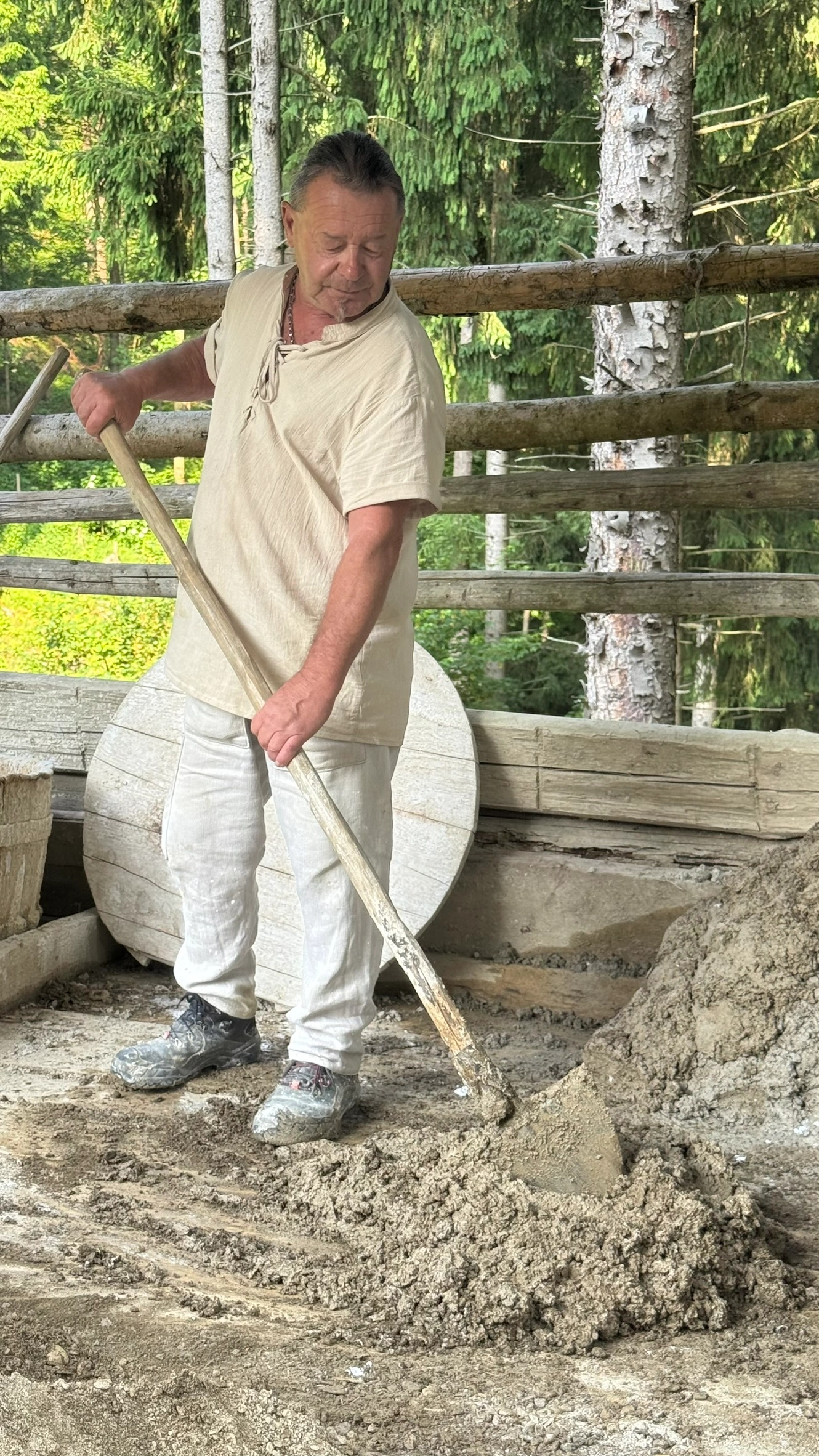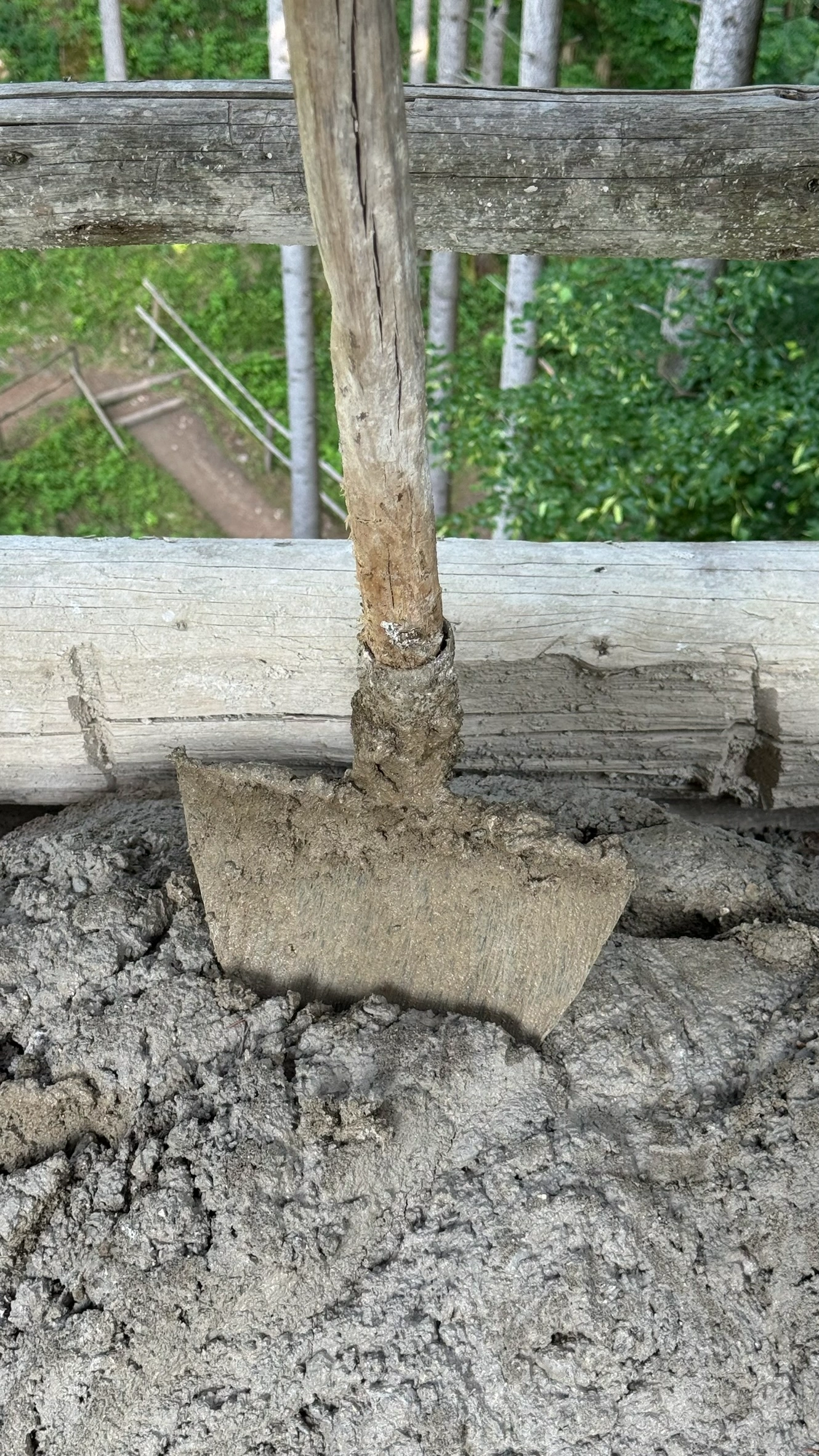Lime Mortar
In European castle construction, lime mortar has been used as a binding agent for rubble and ashlar masonry since the 12th century.
On medieval building sites, labourers sifted sand, slaked lime, mixed gypsum and mortar, and assisted in forming bricks and tiles. As an irreplaceable binding agent in the erection of stone walls, the quality of the mortar depended on the grain size and composition of the gravel used, as well as on the properties of the binding lime paste.
Mixing the sand and lime putty into mortar was usually done by hand in a long mortar trough, either outdoors or under a simple shelter. The trough was often replaced with a board supported by posts, which held the mortar heap in place for the worker. It is very likely that, on medieval building sites, quicklime was at times tightly covered with sand, doused with water, and then mixed.
On this building site, a vat is filled with quicklime early in the morning and doused with water. This produces intense heat, causing the burnt lime pieces to boil and disintegrate. When used hot, lime mortar gives the masonry particular stability.
The most important tool for the mortar mixer was the mortar hoe, featuring a round or rectangular blade made of wood or iron, mounted at a right angle to the handle.
For tower construction, three shovelfuls of gravel are mixed with one shovelful of lime.

